240-hour Visa-free Transit in Xi'an
Why Beijing Is Worth Visiting
Beijing, the heart of China, is a city where ancient history meets the modern world. As the capital of the country, Beijing is the embodiment of Chinese culture, boasting centuries-old architecture, vibrant local traditions, and world-class modern attractions. The city is home to some of China's most iconic landmarks, including the Great Wall, the Forbidden City, and the Temple of Heaven, each telling stories that span thousands of years.With a fascinating combination of old and new, Beijing is an optimal opportunity for foreign visitors to dive deep into Chinese history, experience local life, and enjoy a rich mix of cultural experiences.
Best Itinerary and Attractions in Beijing
-
Itinerary
Day 1: Tiananmen Square → Temple of Heaven → Forbidden City → Jingshan Park
Day 2: Summer Palace → Bird’s Nest & Water Cube → Beijing Hutongs
Day 3: Mutianyu Great Wall → 798 Art Zone
Day 4: Yonghe Lama Temple → Qianmen Street & Dashilan
-
Attractions Overview
1) Tiananmen Square (天安门广场)
Tiananmen Square, one of the world’s largest public squares, holds immense historical significance. It is the site of many important events in China’s modern history, including the founding ceremony of the People's Republic of China in 1949. Entrance Fee: Free Tip: Avoid peak hours, as it can get very crowded, especially during national holidays.
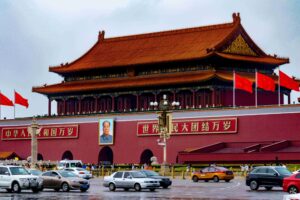
2) Temple of Heaven (天坛)
This UNESCO World Heritage site was once used by emperors for annual rituals to ensure a good harvest. The temple's architectural design is a marvel, reflecting the deep connection between Chinese culture and the cosmos. Entrance Fee: ¥35 ($5 USD) Special Experience: You can also see locals practicing traditional Chinese arts like calligraphy, Tai Chi, and kite flying.
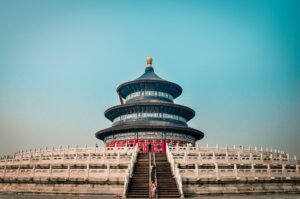
3) Forbidden City (紫禁城)
The Forbidden City is a majestic palace complex that served as the home of Chinese emperors for over 500 years. The vast collection of artifacts and intricate architecture provides an unforgettable glimpse into ancient imperial China. Entrance Fee: ¥60 ($8.50 USD) Cultural Insight: Don't miss the Palace of Heavenly Purity for its fascinating history. Souvenir shops within the palace offer replicas of ancient Chinese artifacts. Tip: Consider renting an audio guide or joining a guided tour to fully appreciate the cultural richness.
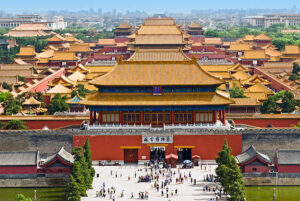
4) Jingshan Park (景山公园)
This park, situated directly north of the Forbidden City, offers one of the best panoramic views of the imperial palace and Beijing city. Entrance Fee: ¥2 ($0.30 USD)
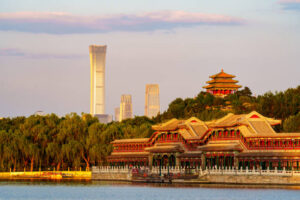
5) Summer Palace (颐和园)
A UNESCO World Heritage site, the Summer Palace is a royal garden known for its picturesque landscapes, tranquil lakes, and elegant architecture. The Long Corridor, the Seventeen-Arch Bridge, and Kunming Lake are especially beautiful. Entrance Fee: ¥30 ($4.50 USD) Special Experience: Don’t miss the chance to ride a traditional boat on Kunming Lake.
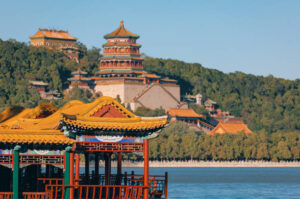
6) Bird’s Nest & Water Cube (鸟巢与水立方)
The Bird's Nest and Water Cube were the main venues for the 2008 Beijing Olympics. These modern architectural marvels stand in stark contrast to Beijing’s ancient structures. Entrance Fee: Free to explore the outside, but ticket prices for entry to some venues may vary.
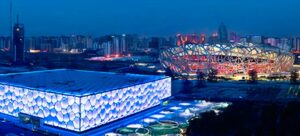
7) Beijing Hutongs (北京胡同)
These narrow, traditional alleyways are a living testament to old Beijing. Walk through these winding streets, and you’ll discover small courtyards, old-style homes, and a variety of family-run shops. Cultural Insight: You can take a rickshaw ride through these historic alleys for a deeper look into the city’s traditional lifestyle.
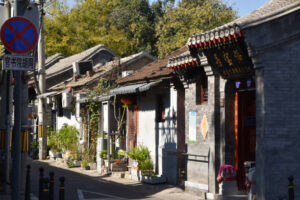
8) Mutianyu Great Wall (慕田峪长城)
The Mutianyu section of the Great Wall is one of the best-preserved and less crowded areas, offering breathtaking views. You can hike the wall or take a cable car to reach the top. Entrance Fee: ¥45 ($6.50 USD)
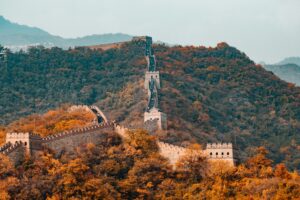
9) 798 Art Zone (798艺术区)
This vibrant art district is housed in a former industrial complex and is now a hub for contemporary art in Beijing. The 798 Art Zone is filled with galleries, design shops, and cafés that make it a perfect place to explore Beijing’s modern cultural scene. Entrance Fee: Free
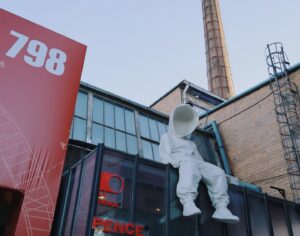
10) Yonghe Lama Temple (雍和宫)
The Yonghe Lama Temple is one of the largest Tibetan Buddhist temples in China. It’s renowned for its stunning architecture and the massive statue of Maitreya Buddha. Entrance Fee: ¥25 ($3.50 USD) Cultural Insight: Many visitors come here to experience Tibetan Buddhist rituals, with monks performing traditional prayers.
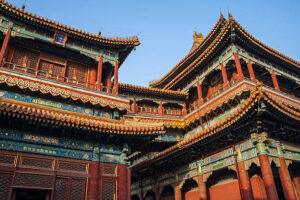
11) Qianmen Street & Dashilan (前门街道与大栅栏)
Qianmen Street is a historic commercial area filled with traditional Chinese architecture and shops, selling souvenirs, snacks, and artisanal products. Dashilan is nearby and is famous for its old-school Beijing atmosphere. Cultural Insight: Look for Liubiju on Qianmen Street, a store dating back to 1851, selling traditional Chinese pickled vegetables. Tip: This area is great for buying traditional Beijing souvenirs, such as silk fans and paper cuts.
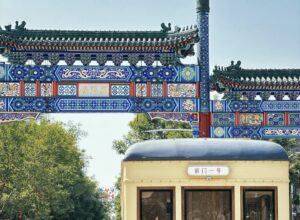
Food Recommendations about Must - Try Iconic Beijing Foods
1) Peking Duck (北京烤鸭)
Peking Duck is a quintessential Beijing dish. The crispy skin, tender meat, and accompanying condiments (thin pancakes, hoisin sauce, and scallions) create a unique and savory experience. Best Place to Try: Quanjude on Wangfujing Street, one of Beijing’s most famous duck restaurants. Price: ¥150-300 per duck.
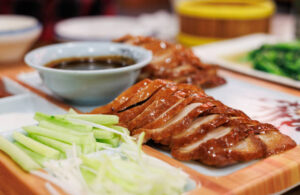
2) Imperial Pastries (宫廷糕点)
Imperial Pastries were originally made for the emperors and their court. The delicate cakes and sweets come in a variety of flavors, including lotus seed paste and red bean paste. Where to Find: Old Beijing Pastry Shop near the Forbidden City. Price: ¥40-80 for a box of assorted pastries.

3) Jiaozi (饺子)
Dumplings are a staple in Beijing. They're traditionally filled with pork, vegetables, and sometimes even seafood. Where to Try: Dumpling King, near Qianmen Street, serves up a wide variety of dumplings. Price: ¥30-60 for a meal.
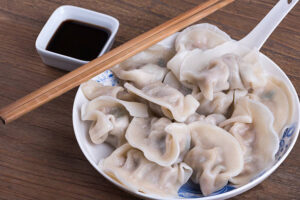
4) Zha Jiang Mian (炸酱面)
A classic Beijing noodle dish made with thick wheat noodles and a savory soybean paste sauce with pork. Where to Try: Bian Yi Fang, a famous local noodle shop. Price: ¥25-40 per bowl.
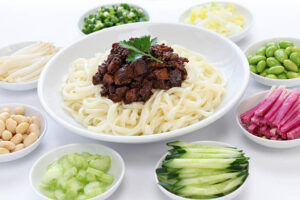
Travel Tips for Visiting Beijing
-
Transportation
Subways
The Beijing subway is the most convenient way to get around the city. It’s clean, efficient, and has English signage. You can purchase a Yikatong metro card at any subway station. It’s convenient and works for buses as well.
Taxis & Ride-Sharing
Taxis are widely available, but using a ride-sharing app like Didi (similar to Uber) will make things much easier for foreign travelers. You can download the Didi app and register with your international phone number.
Buses
Beijing’s buses are affordable but can be crowded during peak hours. If you’re traveling short distances, the bus system is a viable option.
Bikes
Shared bikes are available through apps like Mobike or Ofo, and they’re perfect for exploring the city at your own pace. You’ll need to scan the QR code to unlock a bike.
-
Payment Methods
Beijing is increasingly cashless. Mobile payment platforms like Alipay and WeChat Pay are widely accepted at most shops, restaurants, and attractions. As a foreigner, you may need to register your international bank card on these platforms, or use your credit card directly in most places.
-
Culture & Etiquette
Tipping
Tipping is not a common practice in China. Service charges are often included in the bill at high-end hotels and restaurants, so tipping is not necessary.
Table Etiquette
When dining, it’s important to know a few basic Chinese dining etiquettes, such as using chopsticks, waiting for the host to start eating, and rotating the dish counterclockwise. Also, avoid sticking chopsticks upright into your rice bowl (it resembles incense offerings).
Photography
Always check for “no photography” signs in temples, museums, and exhibitions. Ask for permission before photographing locals, especially seniors, monks, military personnel, or ethnic minorities.
Public Behavior
Loud conversations and public displays of affection are less common in China. Speaking in a moderate tone and respecting personal space, especially in temples and historical sites, will make your visit more pleasant.
-
Climate & Dress
Beijing has a continental climate with hot summers and cold winters. It’s advisable to pack light clothes for the summer, but bring warm clothes if you’re visiting in winter. The city’s weather can vary, so it’s always a good idea to check the forecast before your trip.
